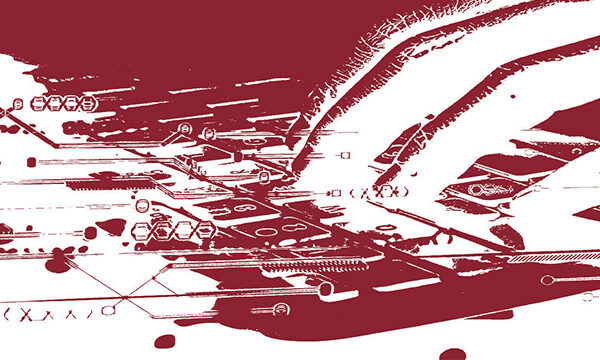Back to series
PROFILE IN FAITH
The Making of the Missionary
Mary Moffat
“Living-Stone”
His Legacy
His Love for Africa and Africans
His Deep Hatred of the Slave Trade
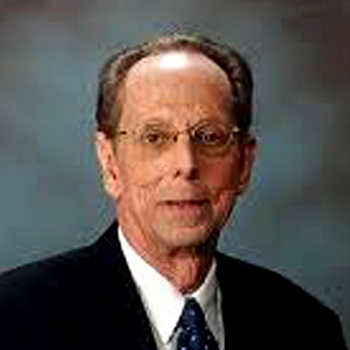


PROFILE IN FAITH
David Livingstone (1813 - 1873)
"He lived and died for good."
Click here to open a Print - Friendly PDF
David Livingstone was born in a cotton mill tenement in Blantyre, Scotland, on March 19, 1813. Now the David Livingstone Centre, the building was about to be demolished during the 1920s when it was saved by thousands of modest donations, many from Scottish Sunday school children. The center’s surrounding park features a fountain with a great marble hemisphere of the world and a dramatic statue of Livingstone being mauled by a lion.1 Karen Carruthers, manager of the David Livingstone Centre, says, “We get a lot of Africans coming here and for them this is genuinely a place of pilgrimage. Quite often they’ll burst into tears or sing.”2
Two hundred years after his birth, David Livingstone is remembered and honored in Africa. Blantyre, the capital of Malawi, is named for Livingstone’s birthplace. The cities of Livingstone in Zambia and Livingstonia in Malawi have retained the missionary’s name. In 2005 Zambia marked the 150th anniversary of Livingstone’s “discovery” of the great falls—“the smoke that thunders”—which he named Victoria for his queen. Friday Mufuzi, senior keeper of the Livingstone Museum in Zambia, says that unlike the majority of nineteenth-century missionaries who were seen as promoters of colonialism, Livingstone is regarded as “an icon” in Zambia.3 The name Livingstone, he explains, has become part of the very folklore of the country. One of the rituals when a new chief is being installed involves his pretending to swallow a stone, the kencheyo, which is said to be living. “When he ‘swallows’ it,” Mufuzi says, “it transforms him into a chief, so he becomes a ‘living stone.’”4
At the site in northeast Zambia where Livingstone died and his heart is buried stands a tall stone pillar with several inscriptions, including one added on the centenary of his death: “After 100 years David Livingstone’s spirit and the love of God so animated his friends of all races that they gathered here in Thanksgiving on 1st May 1973, led by Dr Kenneth David Kaunda, President of the Republic of Zambia.” President Kaunda led the singing and dancing and lauded Livingstone as Africa’s “first freedom fighter.”5
The Making of the Missionary
David Livingstone’s Scottish heritage included a great-grandfather killed fighting on the Jacobite side at the Battle of Culloden, as well as Presbyterian Covenanters. His grandparents had migrated from the Highlands into central Scotland. Young David learned Gaelic from them and sometimes read the Gaelic Bible to his grandmother. David’s father was a door-to-door tea salesman who distributed gospel tracts with his tea. From David’s earliest years, Christian faith and hard work shaped his life. At age nine he could recite from memory all 176 verses of Psalm 119. At age ten he began to work in the Blantyre Mill. After working fourteen hours a day, he attended classes for another two hours, studying Latin, botany, theology, and mathematics.
The warm fellowship of the Congrgational church where his family worshiped strengthened David’s faith and led to his dedication to foreign missions—“to consecrate my whole life,” he wrote, “to the advancement of the cause of our blessed Redeemer.”6 Intending to serve in China, he pursued both theological and medical studies, so that, like Christ, he could both preach and heal. When the Opium War closed the door to the China, Robert Moffat, a seasoned twenty-year missionary in Africa, challenged Livingstone to “advance to unoccupied ground” in Africa where, Moffat told him, he “had sometimes seen, in the morning sun, the smoke of a thousand villages where no missionary had ever been.”7 Hearing those words, Livingstone found his life’s work.
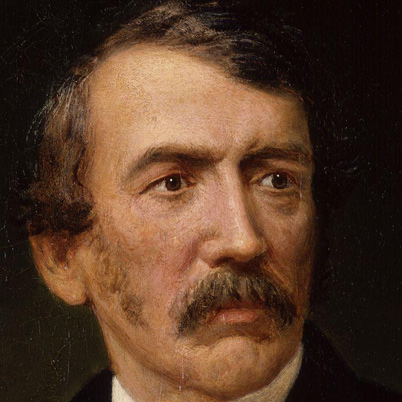 The newly ordained minister and medical doctor was accepted by the London Missionary Society and arrived in South Africa, early in 1841, after a rough three-month voyage by way of Brazil. But his journey had only begun. He then slowly lumbered five-hundred-miles by ox cart from Port Elizabeth to Robert Moffat’s station at Kuruman.
The newly ordained minister and medical doctor was accepted by the London Missionary Society and arrived in South Africa, early in 1841, after a rough three-month voyage by way of Brazil. But his journey had only begun. He then slowly lumbered five-hundred-miles by ox cart from Port Elizabeth to Robert Moffat’s station at Kuruman.
David Livingstone would spend most of the next thirty-two years in Africa, as a missionary and explorer, covering some forty thousand miles on foot, by ox cart, steamer, or canoe through uncharted territory, suffering great hardship and much sickness, including twenty-seven bouts of malaria by one historian’s count. Running through all the years of his life was “the thread of devotion to Africa woven in with his concern that the continent should be Christianized.”8
“The Smoke of a Thousand Villages”
For a few years Livingstone served in Kuruman where Robert Moffat, a skilled gardener, had created “an oasis in the wilderness” and was working hard to translate the Bible into the Tswana language. David eventually moved north to found a series of mission stations but continued to be drawn farther into the heart of the great unexplored continent. It is sometimes said that Livingstone stopped being a missionary and became an explorer, but the two roles were not opposed in his mind. He claimed his explorations were “missionary journeys” and that he was preparing “God’s highway” for those who followed. “The end of the geographical feat is the beginning of the missionary enterprise,” he said.9
When he returned to Britain in 1856, Livingstone resigned from the London Missionary Society but returned to Africa the following year, commissioned by the British government as leader of an expedition to explore central and eastern Africa. Ten years later the Royal Geographic Society sponsored his further explorations.
Livingstone’s missionary strategy was summed up by three c’s—“civilization, commerce, and Christianity.” When he first caught a glimpse of Lake Nyasa, he had a vision of what “twenty or thirty good Christian Scotch families with their minister and elders” could do in this fertile place now stained by the tracks of slave traders.10 He never gave up his dream of white and black people dwelling together in the Christian lands of Africa. Livingstone’s aim was the welfare of the Africans themselves, not the promotion of European colonialism for its own ends.
Mary Moffat
In 1845 at age thirty, David Livingstone married twenty-three-year-old Mary Moffat, the eldest daughter of missionary Robert.11 He discovered and courted her at Kuruman while recuperating from serious injuries incurred in a lion attack. When Livingstone began his treks, Mary sometimes accompanied him. After all, this was her native-born continent. She crossed the great Kalahari plain twice, an incredible accomplishment in itself—say nothing of the fact that she was pregnant. When she was left behind at their small home in Mabotsa, Mary felt wretched and vulnerable. David too felt the pain of their separation but pressed on, sure that he was following God’s will. David loved Mary deeply, but he did not always treat her with lovingkindness. When he planned a longer and more dangerous journey, he decided to send Mary and their four children to England. It was a difficult time for Mary, who sank into depression, struggled with debt and, according to rumors, drank too much. For a time her mood was bitter and her faith fragile. But she prayed, “Accept me, Lord, as I am, and make me such as thou wouldst have me be.” 12
After years of separation, Mary returned to Africa, leaving her children behind in England. She and David had three months together before she died of fever on April 27, 1862. She was buried beneath a baobab tree on the banks of the Zambesi in a destitute region of Mozambique. Livingstone wept like a child, and for the first time in his life, he said, he too was “willing to die.”13
This bicentennial year of Livingstone’s birth has produced not only new books about his life and work, but also a much-needed book about Mary—Looking for Mrs. Livingstone.14 Alexander McCall Smith writes in the introduction that Julie Davidson “has created in this remarkable work of historical and geographical reflection a fascinating picture of a remarkable life.” 15
“Living-Stone”
The years took their toll on David Livingstone, but he carried on, determined to fight slavery and track down the elusive Nile, thereby providing a route for commerce and Christianity into the heart of Africa. He hoped, he said, that “when the day of trial comes” he would “not be found a more sorry soldier than those who serve an earthly sovereign.”16
For months no one heard from Livingstone until the Welsh-American journalist Henry Morton Stanley, on behalf of the New York Herald, found him in the heart of Tanzania on November 10, 1871. Stanley greeted him with the famous handshake and words, “Dr. Livingstone, I presume.” Livingstone refused to go home to Britain with Stanley. He wanted to continue his work in his beloved Africa.
At the age of sixty, David Livingstone died in what is now Zambia, on May 1, 1873, at four in the morning, kneeling in prayer beside his cot. His African friends, former slaves he had freed, buried his heart under a tree, read the funeral service from the Book of Common Prayer, and then sat down “and cried a great deal.” They wrapped his body in calico and dried it in the sun to preserve it for the long trip back home. They trekked fifteen hundred miles to the coast, a journey of more than eight months. David Livingstone’s body was brought back to England and buried at Westminster Abbey on April 18, 1874. The great congregation sang, thundering forth the “Old One Hundredth” tune of the doxology: “Praise God from whom all blessings flow; praise him, all creatures here below; praise him above, ye heavenly host: praise Father, Son, and Holy Ghost. Amen.
Livingstone’s tomb in the center of the nave of Westminster Abbey bears the inscription: “Brought by faithful hands over land and sea, David Livingstone: Missionary, Traveler, Philanthropist. For thirty years his life was spent in an unwearied effort to evangelize the [Africans], to explore the undiscovered secrets and abolish the slave trade. And other sheep I have, which are not of this fold: them also I must bring, and they shall hear my voice; and there shall be one fold and one shepherd.”
A British magazine paid tribute to the famous missionary-explorer with these words:
He needs no epitaph to guard a name
Which men shall prize while worthy work is known;
He lived and died for good—be that his fame:
Let marble crumble: this is
LIVING-STONE.17
His Legacy
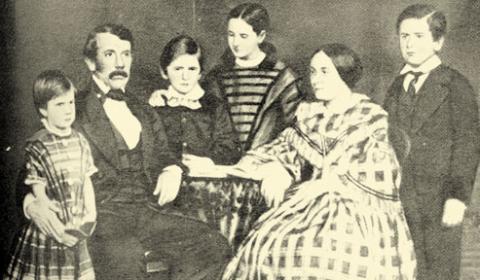 There are more than one hundred biographies of David Livingstone. The earliest books picture him as a servant of God who became a great missionary and courageous champion of Africans, giving his last years and ebbing strength to fighting the slave trade. Florence Nightingale spoke for many when she called him “the greatest man of his generation.”18 Anglican bishop and missiologist Stephen Neill wrote, “I have not found it necessary to revise my opinion, formed many years ago, that the two great men of the nineteenth century were Abraham Lincoln and David Livingstone.” 19
There are more than one hundred biographies of David Livingstone. The earliest books picture him as a servant of God who became a great missionary and courageous champion of Africans, giving his last years and ebbing strength to fighting the slave trade. Florence Nightingale spoke for many when she called him “the greatest man of his generation.”18 Anglican bishop and missiologist Stephen Neill wrote, “I have not found it necessary to revise my opinion, formed many years ago, that the two great men of the nineteenth century were Abraham Lincoln and David Livingstone.” 19
Later studies concentrated on Livingstone’s faults and failures and his supporting role in the European colonizing of Africa. Tim Jeal’s Livingstone, published in 1973, the year of the centenary of Livingstone’s death, “seemed intended to reduce Livingstone to a good deal less than half-size,” according to Neill. 20
While sharply critical of Livingstone at some points, Cecil Northcott in David Livingstone: His Triumph, Decline, and Fall, also published in 1973, states that his “critical judgment is in no sense a demolition. [Livingstone] remains essentially, I think, a great and unique person.” “If I have laid the accent on failure,” Northcott writes, “it is because somewhere within that failure lies the essence of his triumph.”21
Sarah Worden, curator of the David Livingstone bicentenary exhibition in the Royal Scottish Museum, says that Livingstone is “a complex and engaging subject, a fascinating story of a man who seems on the one hand larger than life, determined and driven, but essentially a fallible and vulnerable individual.” 22
David Livingstone combined conflicting characteristics. He was stubborn and long-suffering, judgmental and generous, harsh and gentle, proud and humble, reckless and courageous. 23
Both friends and enemies noted that he could be notoriously stubborn. The London Missionary Society (LMS) found it difficult to control its famous missionary. Livingstone wrote to the LMS that he would try to follow its instructions, adding that he was willing to go anywhere, “provided it be forward.”24 And Livingstone believed that he knew better which way was forward. A friend commented lightheartedly that “in an Englishman we might, I think, have called the phase obstinance, but with Livingstone it was Scottishness.” 25
Livingstone drove himself beyond reason and expected others to do the same. He could be ruthless, at times, in his disregard of people’s feelings. Longtime friend John Kirk joined Livingstone on his Zambezi expedition but became furious with Livingstone’s leadership, throwing a copy of Livingstone’s Missionary Travels into the river. But Henry Stanley, who stayed with Livingstone for four months, wrote that he could not wish for a “happier companion, a truer friend, always polite—with a politeness of the genuine kind.” 26
David Livingstone recognized his failures. He realized, he said, that his heart was “sometimes fearfully guilty of distrust,” and he was ashamed to think of it. 27
In a review of Oliver Ransford’s David Livingstone: The Dark Interior, Stephen Neill notes that Ransford acknowledges the “less pleasant side” of Livingstone alongside his “real greatness”: “his love for Africa and Africans, his deep hatred of the slave trade, his concern for the spread of the gospel, the immense services he rendered to Africa.” 28
His Love for Africa and Africans
David Livingstone shed much light on “the dark continent” in his books, in which he treated geographical, scientific, linguistic, and cultural observations with explanations of his missionary work.29
Livingstone’s attitude toward the people of Africa contrasted sharply with that of most nineteenth-century Europeans. The Boer farmers’ “stupid prejudice against colour” and their treatment of the Africans infuriated him, as did British policy in the Cape.30 He defended the rights of the Xhosa to fight for their land, and justified the 1851 rebellion of the Hottentots.
Livingstone developed deep friendship with Africans and valued their opinions and culture. He displayed more trust and openness toward Africans than he sometimes did toward his European colleagues. He believed that Africans were more resistant to the gospel because of the oppresive white people they had met. He thought that “the natives always become much worse somehow after contact with the Europeans.”31 Livingstone’s “missionary principles gave the primacy to Africans in the work of evangelizing Africa.”32
Northcott summarizes Livingstone’s work: “He took Africa seriously and treated its people accordingly. Following his footsteps, no one any longer could call Africa a continent of savages, and in his wake followed a volume of goodwill to Africa that would have surpassed all his dreams.”33 Andrew Walls agrees: “His life and writings show a respect for Africans and African personality unusual at the time, and his confidence never wavered in African capacities and in the common humanity of African and European.”34
His Deep Hatred of the Slave Trade
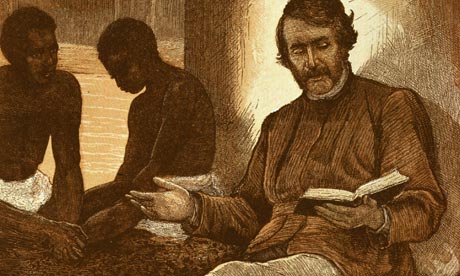 Livingstone met slavery first in South Africa and later, in its Arab and Portuguese form, in East Africa. He drove himself relentlessly to do what he could to destroy the slave trade—“the open sore of the world,” he called it.35 His exploratory journeys were done with one aim—to open up Africa for commerce and Christianity, which was the only way, he believed, to overcome slavery.
Livingstone met slavery first in South Africa and later, in its Arab and Portuguese form, in East Africa. He drove himself relentlessly to do what he could to destroy the slave trade—“the open sore of the world,” he called it.35 His exploratory journeys were done with one aim—to open up Africa for commerce and Christianity, which was the only way, he believed, to overcome slavery.
In the year Livingstone died, the last slave was sold openly in the Zanzibar market. “His exposure of the African inland slave trade could well be counted his greatest achievement,” concludes Northcott. 36
Andrew Walls writes that Livingstone’s
later career was dominated by the desire to root alien oppression out of Africa. There is real truth behind the title of one of the popular biographies—Livingstone the Liberator . . . If Livingstone is a herald of imperialism, he is also more importantly and permanently a herald of African independence. In this . . . he is typical of the missionary movement of his day. In some respects it led the way to empires. But, more than any other force of Western origin, it pointed beyond them.37
His Concern for the Spread of the Gospel
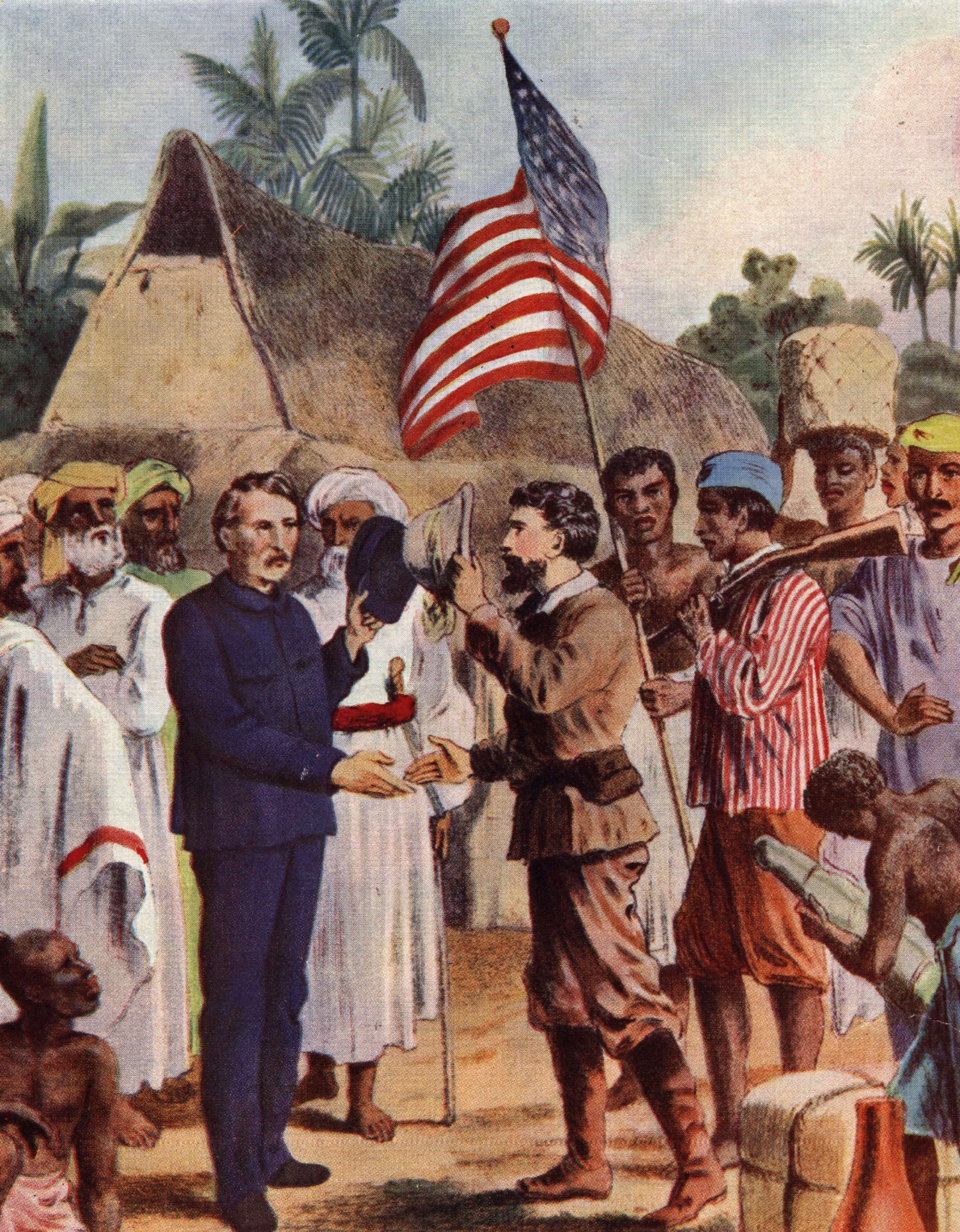 Livingstone was much ahead of his time in sympathizing with the Africans’ struggle to connect Christianity with their culture.38 When Sechele, king of the Bakwena people—sometimes called Livingstone’s only convert—asked about polygamy, Livingstone urged him to seek the counsel of the Bible. The king decided that the Bible did not instruct him to give up all the customs of his people, although it required him to believe in the Lord Jesus Christ.
Livingstone was much ahead of his time in sympathizing with the Africans’ struggle to connect Christianity with their culture.38 When Sechele, king of the Bakwena people—sometimes called Livingstone’s only convert—asked about polygamy, Livingstone urged him to seek the counsel of the Bible. The king decided that the Bible did not instruct him to give up all the customs of his people, although it required him to believe in the Lord Jesus Christ.
Livingstone’s life and testimony impressed many Africans, and they became his friends. God alone knows how many became true Christians. Henry Stanley called Livingstone a “truly pious man—a man deeply imbued with real religious instincts. His religion . . . is of the true, practical kind, never losing a chance to manifest itself in a quiet, practical way—never demonstrative or loud.”39
Livingstone ended his famous Cambridge speech in December 1857 with the words, “I go back to Africa to try to open up a path for commerce and Christianity. Do you carry out the work which I have begun.”40 The response was immmediate and impressive. The Universities’ Mission to Central Africa was established and supported by Anglicans at the universities of Oxford, Cambridge, Dublin, and Durham. A little later, soon after Livingstone’s death, both the Free Church of Scotland and the Church of Scotland began missionary work in Africa.
Livingstone’s example challenged people in the nineteeth century to go as missionaries or to support those who went. James Stewart, who accompanied Livingstone in 1862, recovered his respect for his hero and served at the Lovedale Institution in the Eastern Cape of South Africa until his death in 1905. Mary Slessor’s missionary call to Africa was confirmed by the death of David Livingstone in 1873. Two years later she arrived in Calabar. Young William Henry Sheppard, an African-American born in the South during the era of slavery, went to the Congo in 1890 because Livingstone considered it to be a promising mission field. Peter Cameron Scott, founder of the African Inland Mission, was inspired to return to Africa in 1895, when he read the inscription on Livingstone’s tomb, “Other sheep I have which are not of this fold; them also I must bring.” Alexander Mackay became an engineer missionary to Uganda in 1876, inspired by Livingstone’s conviction that missions should transform the material as well as the moral and spiritual aspects of African life. The list of missionaries of “the great century” inspired by David Livingstone’s example would no doubt reach into the hundreds.

Tim Jeal judged that “Livingstone appears to have failed in all he most wished to achieve . . . Undoubtedly Livingstone’s greatest sorrow would have been that Africa never became a Christian continent.”41 When Jeal wrote those words in 1973, there were already millions of Christians in Africa. Today there are many more, at least 390 million. Philip Jenkins predicts that “by 2025, Africa and Latin America will vie for the title of the most Christian continent.”42
David Livingstone believed that “the missionary enterprise” included “every effort made for the amelioration of our race, the promotion of all those means by which God in His providence is working, and bringing all his dealing with man to a glorious consummation.”43 These words, supported by a lifetime of devoted labor, sum up Livingstone’s view of God’s world mission and our participation in it. T.J. Thompson has written, “As ‘the real Livingstone,’ faults and all, is rediscovered, his continuing relevance for mission in the twenty-first century will be revealed.”44
| Notes: 1. There are impressive statues of David Livingstone in Princes Street Gardens in Edinburgh and at Cathedral Square in Glasgow. 2. Jim Gilchrist, “Dr. Livingstone, I Presume,” Scottish Life, Spring 2013, 39–43, 73. 3. Ibid., 73. 4. Ibid. 5. Ibid. 6. Cecil Northcott, David Livingstone: His Triumph, Decline, and Fall (Philadelphia: Westminster, 1973), 20. 7. Ibid., 22. 8. Ibid., 14. 9. Andrew F. Walls, “David Livingstone 1813–1873: Awakening the Western World to Africa,” in Mission Legacies: Biographical Studies of Leaders of the Modern Missionary Movement, ed. Gerald H. Anderson, Robert T. Coote, Norman A. Horner, and James M. Phillips (Maryknoll, NY: Orbis, 1994), 145–46. 10. Northcott, David Livingstone, 67. 11. There is a Mary Moffat Museum at her birthplace, Griquatown, eight hundred miles north of Cape Town. 12. “David Livingstone: Missionary Explorer in Africa,” Christian History 56: 30. 13. Northcott, David Livingstone, 85. 14. Julie Davidson, Looking for Mrs. Livingstone (Edinburgh: St. Andrew Press, 2012). 15. McCall Smith made several journeys to Botswana to visit a childhood friend, Howard Moffat (a member of the same family as Robert Moffat and Mary Moffat Livingstone), who ran a small hospital in a village north of Gaborone. McCall Smith writes, “I had always admired Howard’s work, which has been much the same in its concerns and spirit as that of his missionary forebears.” McCall Smith’s visits to Botswana became the inspiration for his famous No. 1 Ladies’ Dectective Agency series. 16. Northcott, David Livingstone, 37. 17. Ibid. Punch on the burial of David Livingstone. 18. Tim Jeal, Livingstone (New York: G.P. Putnam’s, 1973), 1. 19. Stephen Neill, Review of David Livingstone: The Dark Interior, by Oliver Ransford, Churchman 93, no. 1 (1979), 75. 20. Ibid., 74. 21. Northcott, David Livingstone, 9. 22. Gilchrist, “Dr. Livingstone,” 15. 23. See Northcott, David Livingstone, chap. 7, “Sizing up the Doctor,” 89–105. 24. Ibid., 31. 25. Ibid., 14. 26. Ibid., 11. 27. Ibid., 68. 28. Neill, Churchman, 74. 29. See The Spiritual in the Secular: Missionaries and Knowledge about Africa, ed. Patrick Harries and David Maxwell (Grand Rapids: Eerdmans, 2012), 49–51. 30. Northcott, David Livingstone, 32. 31. “David Livingstone,” Christian History, 35. 32. Walls, “David Livingstone,” 146. 33. Northcott, David Livingstone, 13–14. 34. Walls, “David Livingstone,” 146. 35. Northcott, David Livingstone, 122. 36. Ibid., 129. 37. Walls, “David Livingstone,” 146. 38. See Fidelis Nkomazana, “Earliest Southern African Biblical Interpretation,” in The Bible in Africa: Transactions, Trajectories, and Trends (Leiden: Brill, 2000), 223–35. 39. “David Livingstone,” Christian History, 41. 40. William Monk, ed., Dr. Livingstone’s Cambridge Lectures (Cambridge: Deighton, Bell, 1860), 168. 41. Jeal, Livingstone, 1, 384. 42. Philip Jenkins, The New Faces of Christianity: Believing the Bible in the Global South (Oxford: Oxford University Press, 2006), 9. 43. Walls, “David Livingstone,” 145–46. 44. Biographical Dictionary of Evangelicals (Downers Grove, IL: InterVarsity, 2003), 370. |
|||

David B. Calhoun
ProfessorDavid B. Calhoun, (1937-2021) was Professor Emeritus of Church History at Covenant Theological Seminary in St. Louis, Missouri. A minister of the Presbyterian Church in America, he has taught at Covenant College, Columbia Bible College (now Columbia International University), and Jamaica Bible College (where he was also principal). Calhoun has served with Ministries in Action in the West Indies and in Europe and as dean of the Iona Centres for Theological Study. He was a board member (and for some years president) of Presbyterian Mission International, a mission board that assists nationals who are Covenant Seminary graduates to return to their homelands for ministry.

 COPYRIGHT: This publication is published by C.S. Lewis Institute; 8001 Braddock Road, Suite 301; Springfield, VA 22151. Portions of the publication may be reproduced for noncommercial, local church or ministry use without prior permission. Electronic copies of the PDF files may be duplicated and transmitted via e-mail for personal and church use. Articles may not be modified without prior written permission of the Institute. For questions, contact the Institute: 703.914.5602 or email us.
COPYRIGHT: This publication is published by C.S. Lewis Institute; 8001 Braddock Road, Suite 301; Springfield, VA 22151. Portions of the publication may be reproduced for noncommercial, local church or ministry use without prior permission. Electronic copies of the PDF files may be duplicated and transmitted via e-mail for personal and church use. Articles may not be modified without prior written permission of the Institute. For questions, contact the Institute: 703.914.5602 or email us.
-
Recent Podcasts
Questions That Matter – Heather and Ashley Holleman and the Greatness of Conversation
by Randy Newman, Heather Holleman on February 14, 2025We live in a conversation-starved time when loneliness...Read More
-
Doubting after Faith – Dr. Bobby Conway’s Story
by Bobby Conway, Jana Harmon on February 14, 2025
-
Emotions, Divine Suffering, and Biblical Interpretation
by Kevin J. Vanhoozer on February 7, 2025
-
Recent Publications
The Impact of Technology on the Christian Life
by Tony Reinke on February 14, 2025"It’s applied technique. So it’s an art. It’s...Read More
-
C.S. Lewis and the Crisis of the Modern Self
by Thaigo M. Silva on February 1, 2025
-
Why Are Christians So Hypocritical?
by William L. Kynes on January 1, 2025
0
All Booked
0.00
All Booked
0.00
All Booked
23993
Heart and Mind Discipleship Live Online Small Group 8:00 PM ET
https://www.cslewisinstitute.org/?event=heart-and-mind-discipleship-live-online-small-group-800-pm-et&event_date=2025-02-25®=1
https://www.paypal.com/cgi-bin/webscr
2025-02-25

Next coming event
Days
Hours
Minutes
Seconds
Heart and Mind Discipleship Live Online Small Group 8:00 PM ET
On February 25, 2025 at 8:00 pmSpeakers
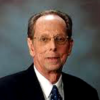
David B. Calhoun
Professor
Team Members

David B. Calhoun
ProfessorDavid B. Calhoun, (1937-2021) was Professor Emeritus of Church History at Covenant Theological Seminary in St. Louis, Missouri. A minister of the Presbyterian Church in America, he has taught at Covenant College, Columbia Bible College (now Columbia International University), and Jamaica Bible College (where he was also principal). Calhoun has served with Ministries in Action in the West Indies and in Europe and as dean of the Iona Centres for Theological Study. He was a board member (and for some years president) of Presbyterian Mission International, a mission board that assists nationals who are Covenant Seminary graduates to return to their homelands for ministry.



